Cold water boils faster than warm water
This is another myth that falls into the “suspend the laws of physics” category. That hasn’t happened yet in my kitchen, and if it has in yours, you can probably get on TV. Seriously, to illustrate how ridiculous this idea is without getting into physics and formulas, think of it this way. If you put cold water on to boil, at some time before it boils the water will have become warm. Let’s say it takes time A for the water to go from cold to warm. Then after some additional time it will boil—call the time it takes to go from warm to boiling B. So, the time it takes the cold water to boil is A + B and the time it takes the warm water to boil is B. If this myth were true then time A + B would be less than time B and there’s just no way this could be no matter how many martinis you’ve had.
A variation of this myth claims that cold water boils faster than warm water if it has been boiled previously and then cooled off. The “explanation” in this case is that the first boiling drives dissolved air out of the water, which is true enough. However, dissolved air does not affect the boiling of water, at least not in any significant way, so this one is nonsense too.
Apparently this myth has its origins in the fact that cold water heats faster than warm water. A pot of water at 40° will reach 60° faster than a pot of 70° water will reach 90°, given the same heat source. This is because the rate of heat transfer is proportional to the temperature differential between the heat source and the item being heated. But the cooler water will always take longer to boil.
It is true, however, that warm water sometimes freezes faster than cold water. This happens only under very specialized conditions and has nothing to do with boiling water.
Note, however, that many people generally avoid using hot tap water for cooking because hot water may not be as clean from sitting in the water heater or from leaching substances from the pipes (a worry in houses with old plumbing).
To keep coffee hot longer, add milk just before drinking.
You’ve poured yourself a cup of coffee and then there’s a knock on the door—the FedEx guy. You want your coffee to be as hot as possible when you come back in a few minutes. Should you add the milk now or wait until just before you drink it? Most people would say to wait, but that’s wrong.
Put the milk in now. Here’s why: Dark-colored objects radiate more heat than light-colored ones, so the light coffee will radiate less heat than the black.
In addition, the heat loss is proportional to the temperature differential between the cup of coffee and the room air. By adding the milk now, you have slightly cooled the coffee, reducing the temperature differential and the heat loss.
If you use cream or half-and-half, the fat may lessen the evaporation from the surface of the coffee and the resultant evaporative heat loss.
Of course, the difference is going to be small, and it’s not likely you’ll notice it.
“Real” chili cannot contain beans or tomatoes.
You hear this on a regular basis, mostly from Texans. The fact is that many delicious traditional (and nontraditional) chilis are made with beans and/or tomatoes. Of course, some places do horrid things with chili (may God have mercy on Cincinnati). There is in fact some basis for this myth. Traditional Texas-style chili is usually made without beans or tomatoes, but that’s just one regional variant.
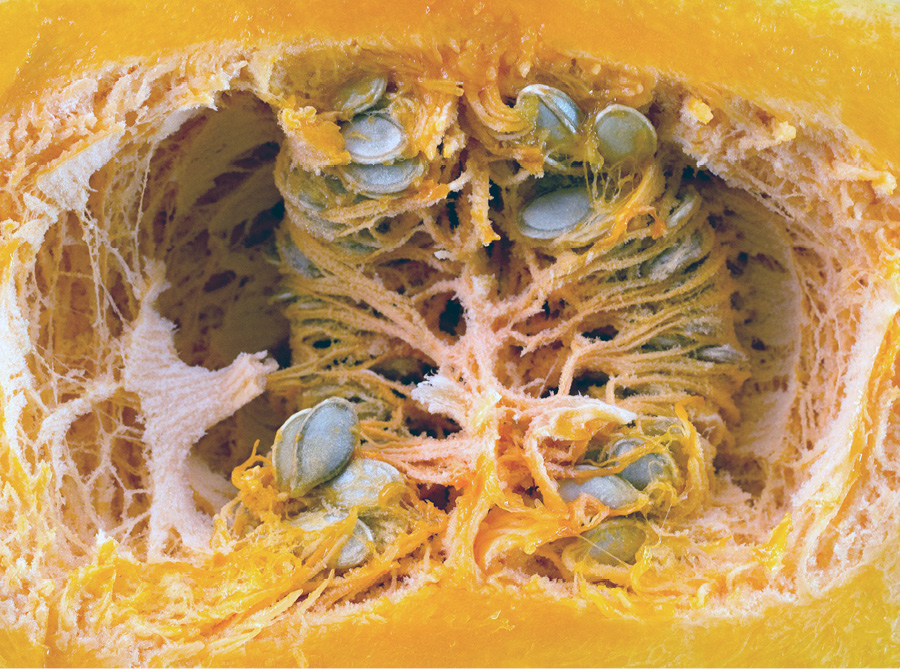
Inside of a cooking pumpkin.
A box of baking soda in the fridge or freezer absorbs odors.
This is a very clever and successful marketing ploy by the baking soda people, but the fact is that baking soda is very poor at absorbing odors. It seems to make sense, however, so lots of people have spent untold billions of dollars to put boxes of baking soda in their fridge or freezer to no effect. Activated charcoal would work much better but is expensive. Better to wrap your food and clean the fridge once in a while.
You feel drowsy after Thanksgiving dinner because of the tryptophan in the turkey.
Not so, but there’s a nugget of truth in the origin of this myth. Tryptophan is an amino acid, and it—or specifically the isomer L-tryptophan—does in fact have the documented effect of inducing sleep. But, you have to take L-tryptophan on an empty stomach, without any other amino acids or proteins, for it to have this effect. I don’t think the terms empty stomach and Thanksgiving dinner belong in the same sentence! Also, other foods, such as chicken, pork, and cheese, contain as much or more tryptophan than turkey, and you don’t hear people claiming that these foods cause drowsiness.
It’s true, however, that tryptophan may be involved in feeling drowsy after any large, carbohydrate-rich meal. It’s not the tryptophan in the food, however, but the tryptophan that’s already in your body. Eating a lot of carbs causes insulin production, which in turn reduces the blood level of some other amino acids. As a result, the relative concentration of tryptophan in the blood is increased, which leads to more synthesis of the neurotransmitter serotonin, which makes you drowsy. That’s the theory, anyway.
Other reasons for feeling drowsy after Thanksgiving dinner (or most any large meal):
• After a large meal, particularly one rich in carbs and fats, your body directs more blood flow to your digestive system and less to the brain.
• Thanksgiving dinner is often accompanied by a glass or three or eight of wine. Need I say more?
So, snooze to your heart’s content after Thanksgiving dinner, but don’t blame the turkey. Just be sure to wake up in time for sandwiches.
All ice cubes are created equal.
Most of us use cubes made with tap water, using either an ice cube tray or a built-in ice maker. They tend to be cloudy and sometimes don’t last as long as we’d like. But, ice is ice, right? Not necessarily. Home-made ice freezes from the outside in. Air that is dissolved in the water, plus any minerals (worse if you have hard water) are pushed to the center, last to freeze, where they create bubbles and haze. The resulting ice cubes contain less actual ice than bubble-free ones of equal size would, and when they melt you may find a sediment of the previously dissolved minerals at the bottom of your glass.
To avoid this, use distilled water (no dissolved minerals) and bring to a boil briefly, then cool and freeze (the boiling drives out most of the dissolved air). You’ll get clear, sediment-free cubes that last a good deal longer. Worth the effort? Maybe only for special occasions!
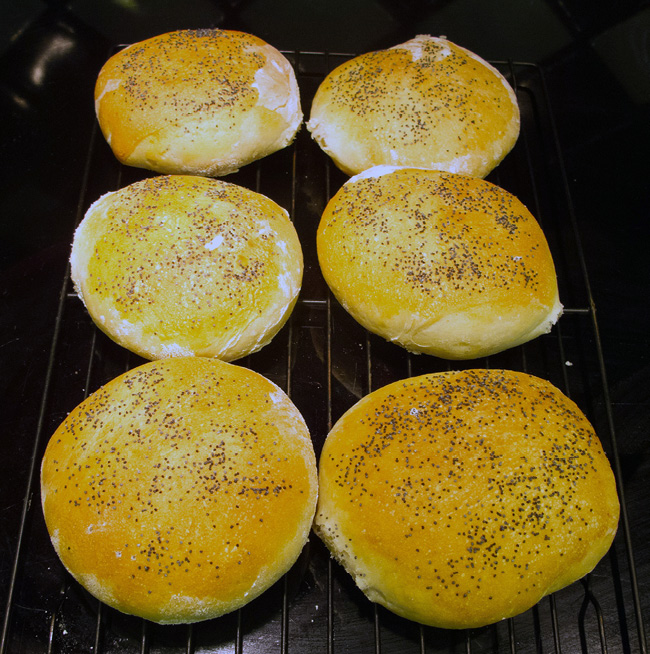
Homemade hamburger buns.
Different areas of your tongue are sensitive to different tastes.
I remember learning this in high school—the so-called tongue map that claimed that each of the four fundamental tastes were “picked up” on different parts of the tongue: bitter in the back, sweet in the front, sour on the sides toward the back, and salt on the sides near the front. This was shown to be false long ago. All areas of the tongue are sensitive to all the tastes.
And yes, there are now believed to be more than four basic tastes. A fifth, called savory or umami, is widely accepted, and some researchers argue for a sixth, piquancy.
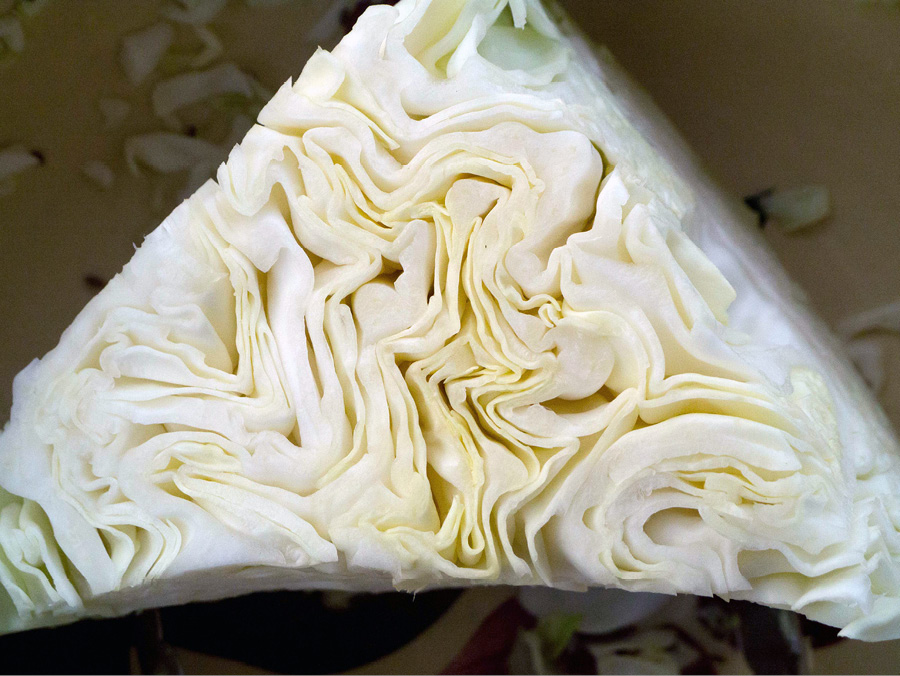
Close-up of cabbage core.
Live lobsters scream with pain when boiled.
It’s commendable that people do not want to inflict pain on animals, but this one is definitely false on the first account (screaming) and probably false on the second (pain).
As for the “scream,” there’s the problem that lobsters have no throat, no vocal cords, no lungs, so how could they scream at all? The fact is that the noise is caused by air trapped in the shell. When heated it expands and forces itself out through small gaps, causing the sound—sort of like when you force air out between your tightly clenched lips to make a rude sound.
What about pain? No one can know for sure what a lobster or similar critter feels, but we can make educated guesses based on what we know about pain in other animals, specifically humans. And I am talking specifically about pain, not discomfort or unpleasantness. Pain doesn’t just happen automatically—it is the result of specific receptors, nerve pathways, and brain regions all cooperating to convert certain physical stimuli into the perception of pain. This has all been thoroughly worked out in humans and other vertebrates. But guess what—lobsters and other crustaceans are not vertebrates and simply do not have these nerve pathways and brain regions (they don’t have a real brain at all, for that matter). In other words, no brain, no pain (sorry, I couldn’t resist that one!).
This does not mean that lobsters and similar animals do not feel anything, and it does not mean that there some stimuli they would rather avoid. These aspects of lobster and crab behavior are well established. But, that’s very different from feeling pain.
Can we know for absolutely positively 100% sure that lobsters don’t feel pain? No, because there’s no way for us to directly experience what they do and do not feel. That should not stop us from making educated guesses. I feel pretty sure that eyeless cave fish cannot see, and I have no doubt that you would feel pretty much the same pain that I would if you touch a hot stove, even though I cannot directly experience what the cave fish or you experience. I don’t have proof that the cave fish does not see or that you feel pain, but I am pretty confident that these things are true.
So, if you are worried about lobsters feeling pain, don’t eat ‘em—but please, don’t nag the rest of us.
Eating bananas makes you more attractive to mosquitoes.
Mosquitoes are attracted or repelled by various odors and also by the carbon dioxide you exhale, but the bananas story is false. So is the claim that taking vitamin B-12 will make you less attractive to mosquitoes. Mosquitoes home in visually to some extent, particularly in the late afternoon, and they seem to like dark colors and movement. But, smell is most important, with the carbon dioxide that you exhale being the primary factor. Other poorly understood aspects of “personal odor” can have attractant or repellent effects, and probably explain why about 20% of people are considered to be “mosquito magnets.” These are the people you want to stand next to at an outdoor party!
If you put the avocado pit in the bowl, guacamole won’t turn brown.
The surface of guacamole turns brown by reacting with oxygen in the air. The guacamole that is directly under the pit won’t turn brown because the pit prevents air from getting to it. Otherwise, the oxidation process turns the exposed surface brown, just as it does on apples and other fruits. You’ll have much better luck protecting the surface from air by pressing aluminum foil or plastic wrap directly on it. A sprinkle of lime or lemon juice can help, too, because the ascorbic acid in the juice (vitamin C) inhibits oxidation.
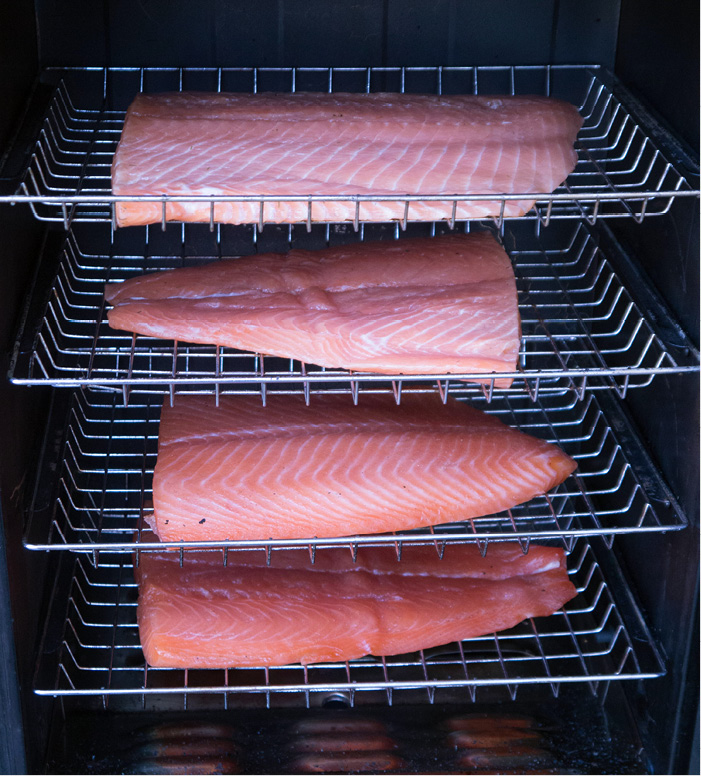
Salmon fillets in the smoker, on their way to becoming lox.
You cannot eat so much that your stomach bursts.
We’ve all said at one time or another “I’m so full I am going to burst.” Well, in all probability you were far from actually bursting—rupturing your stomach—but that does not mean it can’t happen (never mind Mr. Creosote in Monty Python’s film The Meaning of Life).
An adult’s stomach can typically hold 1 to 1.5 liters of food, the point at which you feel really stuffed and 99.9% of us stop eating. If you keep cramming it down, you’re probably safe up to about 3 liters. Above that, who knows? This isn’t something you’d want to do an experiment on! Your gag reflex won’t help because once your stomach is this distended, the muscles are stretched thin and cannot generate the force needed for vomiting. But, there are medically documented cases of stomach rupture due to excessive food intake, and it is, as you might well imagine, a very serious situation. However, except for people with certain eating disorders, it’s nothing for the rest of us to worry about.
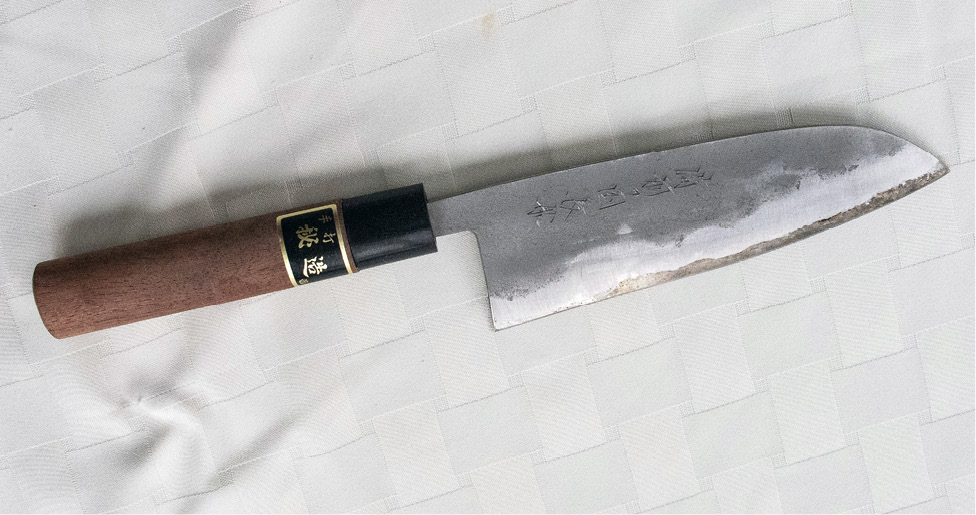
A Japanese chef’s knife.
Many people think that sushi is synonymous with raw fish. Not so—the term actually refers to the vinegared rice. This is made by dissolving sugar in vinegar (usually rice vinegar) and tossing with the hot, just-cooked rice. Sushi therefore refers to vinegared rice served with other ingredients which may or may not include fish (which in turn may be raw or cooked). The vinegared rice itself is referred to as shari. Raw fish served by itself without the rice is called sashimi.